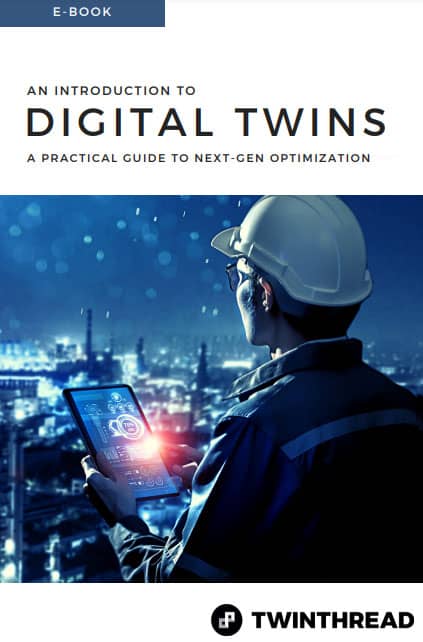The Ubiquitous Connect and Visualize Platform
The basic IIoT platform includes features that facilitate automated connection to data sources, data contextualization, rudimentary analytics, and visualization through dashboards and reports. These offerings, along with the companies that develop them and bring them to market, are ubiquitous. IIoT solutions focused on delivering basic data insights through visualization generate value.
This is especially true for manufacturing companies in the early stages of a digital transformation journey who may be running their manufacturing plants ‘blind’, driving decisions and processes from manually collected, and often highly inaccurate, data.
The question that needs to be asked: Is that enough?
- What drives a buying decision around an IIoT platform?
- Should the criteria be constrained to data capture and visualization?
- What is the real purpose of the investment?
At TwinThread, we believe IIoT investments enable operational continuous improvement and innovation. Continuous implies that there is no endpoint in time- value is generated incrementally and continuously. One initiative leads to the next initiative and so on. How do you drive improvement and innovation on a continuous basis when your platform is limited or has functional constraints?
As an example, the inability to drive action easily and seamlessly from generated insights limits value attainment, as discussed in part one of this series. Many IIoT platforms simply do not have a thread, or workflow, enablement engine designed into their platform architecture. You create dashboards and reports but then you hit a wall. You want to automate a workflow based on specific insights - sorry, that can’t happen without either writing custom code or glomming on some other separate technology or product, which will also require custom code.
Attempting this requires a lot of time and money and will leave a manufacturer, or field equipment provider, with a solution that is difficult and costly to sustain, and impossible to scale.
The story repeats itself when it comes to adding an AI and Machine Learning (ML) infrastructure. Adding it as an afterthought leads to the same challenges and problems. Attempting to add both workflow and AI/ML simultaneously, as separate components, exponentially exacerbates the problems. Long projects, delayed value attainment, high costs, and unsustainable solutions that can’t be scaled is the inevitable result.
When ‘continuous’ is no longer continuous or the pace of continuous becomes increasingly slow and expensive, the result is competitive disadvantage and displacement. Tall tales of easy integration and ‘plug and play’ of disparate IIoT platform components or products will not change the fate or destiny.
Just because you can connect two totally distinct product offerings does not mean you are going to be able to build out innovative new work processes easily and seamlessly, rapidly generate predictive solutions, or accelerate a journey to more autonomous operations. Even if you can live with the headaches and challenges associated with glomming together multiple legacy product offerings, you will be hit with the impossibility of scaling any solution you happen to develop. The ‘unscalable’ surprise is often not revealed until a manufacturer is several years into a project or initiative.
Avoiding disaster requires a complete IIoT platform designed with a digital twin infrastructure that is architected to include not only the data connectivity, contextualization, and visualization layers, but a robust thread engine along with an AI and ML layer that will drive scalable innovation and improvement continuously - both now and into the future.
Tags:
Blog, Digital Twin, Equipment, Manufacturers, IIoT, AI, Contextualization, Visualization, ML, Operationalize
January 26, 2023
Dave’s a seasoned and savvy business strategist, a builder of global partner/customer networks, and a revenue driver. His successful career is a testament to his keen sense of navigating the complexities of the tech world, consistently identifying opportunities and pushing innovation.
Prior to his professional career, Dave received his BS degree in Mechanical engineering from the University of Maryland. Dave continues to shape TwinThread’s growth and deepen his expertise from his desk in the Greater Philadelphia Area.
